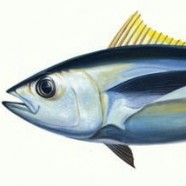(Français) 13 associations exhortent la France à s’opposer au commerce international des ours polaires et de leurs parties
The Nisshin Maru: not to Catch but to Scrap
The Japanese government has announced that they are considering “major repairs” of the Nisshin Maru, the mother factory ship of the whaling fleet that works in Antarctica in the name of science. The work will be superficial because the Nisshin Maru should be ready in time for the departure to Antarctica which happens every year in November. The Japanese Fisheries Agency hopes that this fast cosmetic repair will resist 10 years.
However, the Nisshin Maru is old. She is fragile. She was launched in 1987.
A Taser for Soles
In 1868, a British patent was issued for an electric harpoon for whaling.
In 1931, the magazine Popular Science presented a technique, tried by the Australian State Fishery Station, of sending electric currents into the ocean shocking all nearby fish, bringing them to the surface where they are picked up by nets.
In 1985 Ifremer (1) recommended carrying out research and exchanging information on electric-fishing techniques.
In 1998, afraid of the impacts of “unconventional fishing methods” and catch efficiency on stocks the European Union prohibited “using methods incorporating the use of explosives, poisonous or stupefying substances or electric current(s)”. However, since 2004 clandestine fishing has been observed in Scotland and 15 years ago the use of electricity was authorised for tuna and basking sharks in certain zones of the Baltic.
The PCB Cookbook
Wearing their top chef’s hats, Ifremer, the General Department for Food, the Management of Maritime Fishing, and waterlife have made for you, just in time for New Year’s celebrations, a dish of the highest quality. It is recommended that you consume crabs fished from the depths of the Seine’s bay, and no longer adhere to the opinion of the National Agency for the Sanitation of Food, Work, and the Environment (ANSES) from May 13, 2011, and to forget the prefect of Haut-Normandie’s decree from July 29, 2011. According to the former, the crabs were considered not to conform to the regulated standards of polychlorinated biphenyl (PCB) and dioxin content, and the latter forbid both consumption and marketing.










